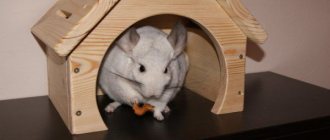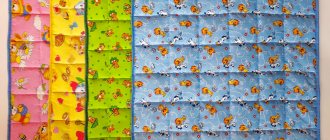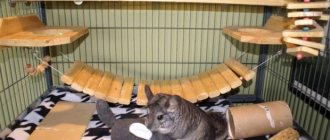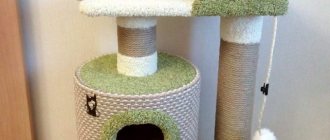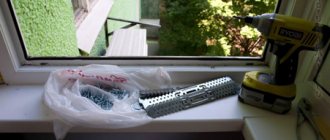How to make a cage for a chinchilla with your own hands
The first obligatory item that appears in the house of the future chinchilla owner is the animal’s permanent location. The home should be spacious, high enough, with a roof, since active running and jumping are necessary to maintain physical fitness.
The cage should contain everything necessary for the animal's life
Don’t think that you can keep a chinchilla in a small cage, letting it run around the apartment every day or walking it outside.
The animal can only be allowed into the room under constant supervision - due to the likelihood of injury or electric shock from gnawing wires. And going outside, even in a harness, contains even more dangers: viruses, infections, parasites, and finally, escape.
In pet stores you can find mainly metal cages of various types for keeping chinchillas at home and on specialized farms. They have advantages, such as the possibility of parsing, but, perhaps, there are more disadvantages. The cages do not reduce the noise level of the residents, garbage easily falls between the bars, and their size is often too small to accommodate everything necessary.
Wire cage
At home, it is difficult to make a cage from twigs, focusing on your own ideas about your pet’s home. Therefore, many owners prefer display cages made by hand or to order.
Such racks look good indoors, are spacious, and easy to use. Through the glass you can observe the life of chinchillas, and the walls and doors will dampen the loud sounds they make.
Optimal size for keeping for breeding purposes
Many keep rodents for commercial purposes. If a large number of pets live in the household, a structure of several compartments will be required.
For breeding animals, a block designed to accommodate a family of rodents is assembled. It consists of several small cells, along which a 20 cm wide corridor runs. It allows the male to visit several females at once, which are isolated from each other. To prevent females from leaving their home, you will have to purchase an additional accessory - a collar.
The minimum size of a cage for a chinchilla for industrial breeding is 50x40x40 cm. It is important to think in advance about the location of the cages so that they have easy access and do not take up much space.
On farms, cage sizes are selected depending on the size of the rodent family. So, 1 male and several females are placed in one room - from 4 to 8 females.
Chinchillas do not smell, while many other rodents require constant bedding to keep the smell from getting stronger.
Do not take chinchillas from random breeders, as no one will guarantee that the animal is healthy. The best option is to take the animal from a nursery.
Cute and funny chinchillas are becoming increasingly popular for apartment living. The animals are unpretentious, have a funny plush appearance, and a kind character. However, they require a special cage to keep them. Some breeders prefer a self-made design to store-bought products, which has a number of advantages.
The chinchilla is a curious and very intelligent animal, and also active and playful.
Before you start arranging a cage for an animal, you need to think about the place where the cage will stand, as well as a bedside table for storing food.
Before buying a pet, you should pay attention to the fact that the chinchilla is a long-liver. And with good care, it will delight its owner for up to twenty years. Another important point is that animals get bored when alone, especially if the owner does not have enough time for daily and full communication with his pet.
Therefore, one day the question may arise about buying a pair for your ward. The couple does not have to be of the opposite sex - same-sex animals get along well with each other. This point should be taken into account when choosing the size of a cage for a chinchilla. It is also worth remembering that many chinchillas are most active in the evening and at night, which means that the cage with the animal should not be installed in the bedroom. Otherwise, there is a risk of waking up from the chinchilla’s loud and not entirely pleasant cry, fussing in the cage, or a loud crunch.
We suggest you familiarize yourself with: DIY toys for ferrets
Cage requirements
For a comfortable life, one chinchilla requires a minimum space of 100 cm in height, 50 cm in length and width. If you want to keep several animals or breed them, you need to provide sufficient space for each.
The more spacious the house, the better.
The home is required to accommodate important attributes: shelter, litter tray, feeder and water bowl, bathing area, equipment for physical activity, and leave free space for the chinchillas themselves to move around.
Important qualities of the manufacturing material are strength and safety, because pets try everything. Painting, impregnation with various chemical liquids, and gluing of parts is not allowed.
The bars should be close enough to each other so that the animal does not escape
Wood, metal, hard plastic, plexiglass are suitable for manufacturing, but in no case chipboard or plastic. Wood, of course, is the best option, but its disadvantages are that it absorbs odors well, gets wet, and is difficult to wash off dirt.
Metal parts (rods, mesh) must be galvanized. The gap between the rods and mesh cells should not exceed 2 cm for adults, and if breeding is planned, then 0.8 cm for young animals. Otherwise, escape is possible.
The gaps between the rods should be no more than 2cm.
The animal house should be equipped with a removable tray to facilitate cleaning, and wooden shelves at different levels. Be sure to ensure a constant supply of air. Large parts should be secured securely, small parts should be removed.
The location where chinchillas live should be free of drafts, direct sunlight, high humidity, and heating devices. It is advisable to install it above 30 cm from the floor, for example, on a cabinet or table.
The owner of a furry animal can independently make a tall display cage for it from wood or aluminum profile. Alternatively, to do this, you can modify an old cabinet with doors and a cabinet, making mesh-covered holes in the walls for ventilation, replacing the doors with glass ones, if necessary. But it’s more interesting to make a completely new product, designing it according to your own plan.
Adaptation to a new home
After purchasing a chinchilla, you will have to settle into its new home. The animal needs time to become familiar with every corner and the people around it. He doesn't like strangers, but he misses his own people and demands communication. Sometimes even turning on the TV can contribute to this.
Chinchilla in a cage
Many breeders train them to use a litter tray so as not to accumulate dirt in inappropriate places. Food should not be poured in excess; at first, one spoon is enough for your pet. You need to feed in one period defined in the day, the most appropriate time in the evening. The owner usually monitors the pet’s needs and supplies food in the amount that is enough for him.
As soon as the animal is released into the cage, it is better not to bother it with your attention for a couple of days and let it adapt to the new place. It takes him a long time to get used to other people’s smells and evaluate the situation. In a space protected from strangers, he is calm, the pet will study, in the time given to him, all the people approaching the cage.
In 4 days we will have our first close contact. It is required to open his home and provide him with the opportunity to independently move into the palm of his owner. This will not work right away; at first the animal will sniff your hands for a long time, run deep into the house, and return again. You should not forcefully pull him out of his shelter; curiosity will prevail over the fear of the unknown, and the pet will go for a walk. These animals perfectly understand human speech, if you talk to them, indicate every action that it is time to eat or walk.
Proper care, neatness in the room, periodic changes of bedding and water will pay off in the attitude of an amazing animal and its stable state of health.
Materials and tools for manufacturing
Initially, a drawing of the future structure is created. You need to decide on the size, taking into account the planned number of residents, the arrangement inside several compartments (for food, toilet, rest), the need for a cabinet below and other criteria.
A cage will make your chinchilla's life comfortable
After creating the drawing, you need to prepare:
- durable natural materials for the main part of the rack - sanded boards impregnated with a protective composition, or cheaper laminated chipboards;
- ready-made doors made of tempered glass, with hinges and lock;
- galvanized metal mesh with small cells;
- metal scissors;
- power tools: drill, jigsaw;
- measuring instruments: tape measure, level, ruler;
- fastening: self-tapping screws, screws.
You can make the facade from glass yourself, having special tools, or go to a workshop. Doors for the cabinet are made separately, if necessary.
Display cage
Instructions for making a display case:
- Carefully cut out the parts indicated in the drawing with a jigsaw.
- Immediately make ventilation windows in the side walls and in the ceiling (if necessary).
- Using scissors, cut pieces of suitable size from the metal mesh and attach them to the holes with self-tapping screws.
- Use a drill to drill holes for fastenings in the required places.
- Install and secure 3 walls to the floor, then attach the ceiling to them.
- Fasten the floor and walls of the cabinet, place a rack on top.
- Arrange fastenings for shelves, place wooden cabinet shelves and display cabinets on them in several tiers.
- Screw the hinges of glass and other doors.
- Place a pull-out metal tray for the filler at the bottom of the display case.
- Arrange the chinchillas' property - and you can move in residents.
Sharp corners are pre-ground, cut areas are sealed with PVC tape, fastener caps are closed with plugs to prevent animals from getting hurt and gnawing on these objects.
A cage made by the hands of a skillful and loving owner will be the most comfortable for the pet and will fit into the interior of the room. Its construction does not require much time, knowledge and skills, but will provide chinchillas with a safe space for many years of life.
Adviсe
Making a cage is not difficult if you follow the step-by-step instructions, which are very easy to follow. You just need to take into account some nuances in the work.
- The cage frame must be placed in a vertical position only. The animal is too active and therefore a wide and low house is not suitable; living in it will be uncomfortable.
- The materials needed to make the cage must be safe. It is best to take wooden shelves. However, over time, they must be replaced, since the rodent loves to sharpen its teeth.
- To ventilate the cage, you will need a galvanized mesh with small cells, which is placed on one or both sides.
- Glass used in arranging doors or walls will help maintain order. At the same time, be sure to take only high-quality accessories in order to avoid any elements falling out that could easily injure the animal.
- It is advisable to install locks on the doors - magnetic or with a key. The chinchilla is very curious and loves to crawl into cracks. And if, while jumping, he accidentally hits the door, he can easily open it and quickly escape.
- You definitely need to buy a special hanging hammock or sew it yourself. It is intended not only for entertainment, but also for relaxation. You can swing on it with pleasure.
- The main thing is that the cage is comfortable for the animals to live in, and convenient for the owners to clean.
Chinchillas bring incredible joy to all family members. In addition, they live a very long time, of course, if they eat right and spend a lot of time in motion. And this requires a lot of space. Consequently, ready-made cells purchased in a store are small and inconvenient in this case. As a result, preference is given to display cases made independently.
To learn how to make a chinchilla cage with your own hands, see the following video.

